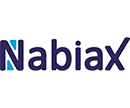Fixed asset management involves various practices to ensure that assets are properly accounted for, and maintained. Asset Tracking involves accurately identifying and cataloging fixed assets, assigning unique identifiers such as serial numbers or barcodes, and recording essential information such as acquisition date, cost, location, and depreciation details. Fixed assets generally have a limited useful life. Managing depreciation involves tracking the reduction in asset value over time and accounting for it accurately in financial records. Fixed asset management ensures adherence to applicable regulations and compliance standards related to asset tracking, reporting, and disposal. Effective fixed asset management involves identifying and mitigating risks associated with asset loss, theft, damage, or misuse. Implementing security measures, such as asset tagging, access controls, and insurance coverage, helps protect valuable assets.




















































